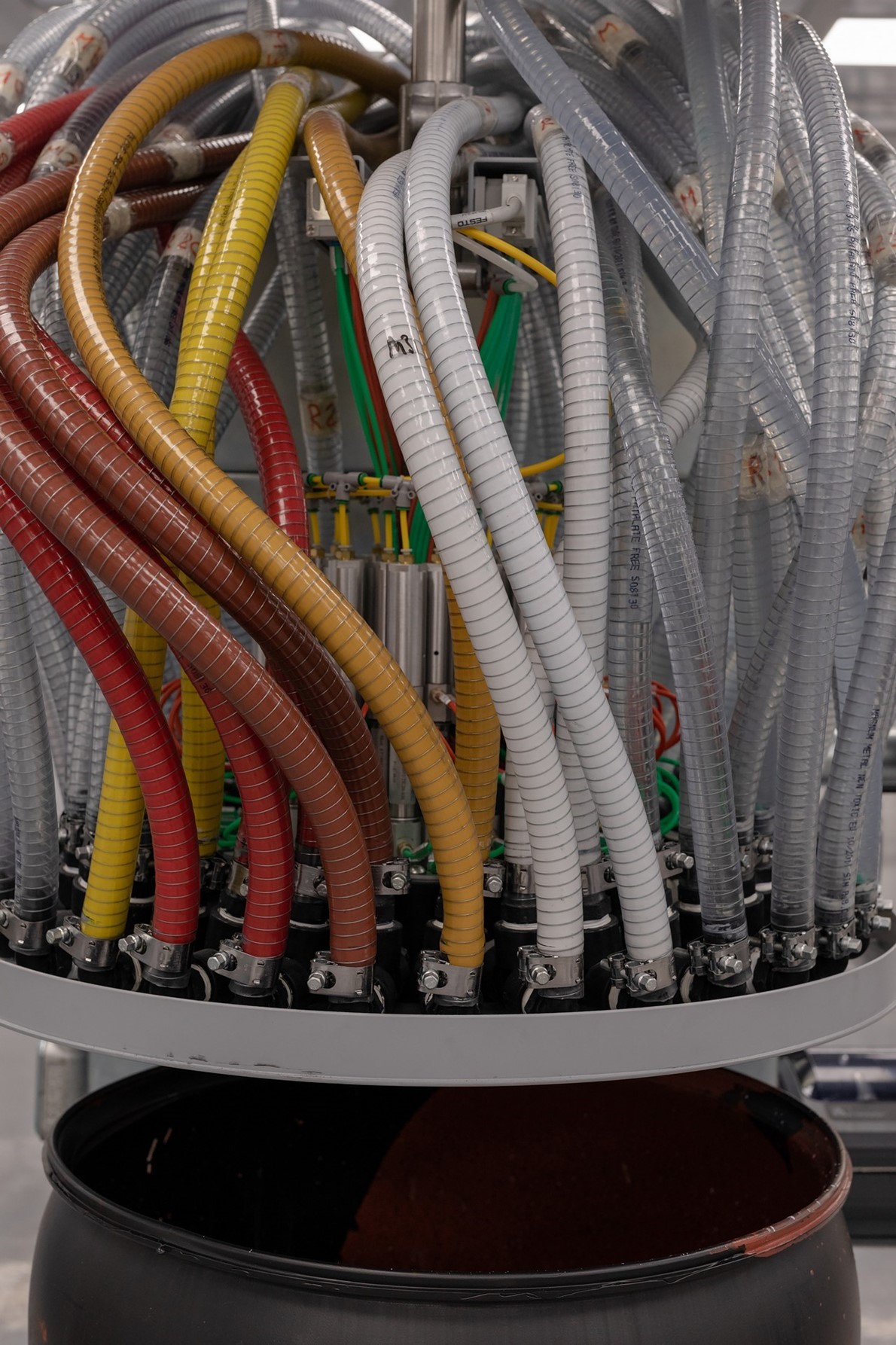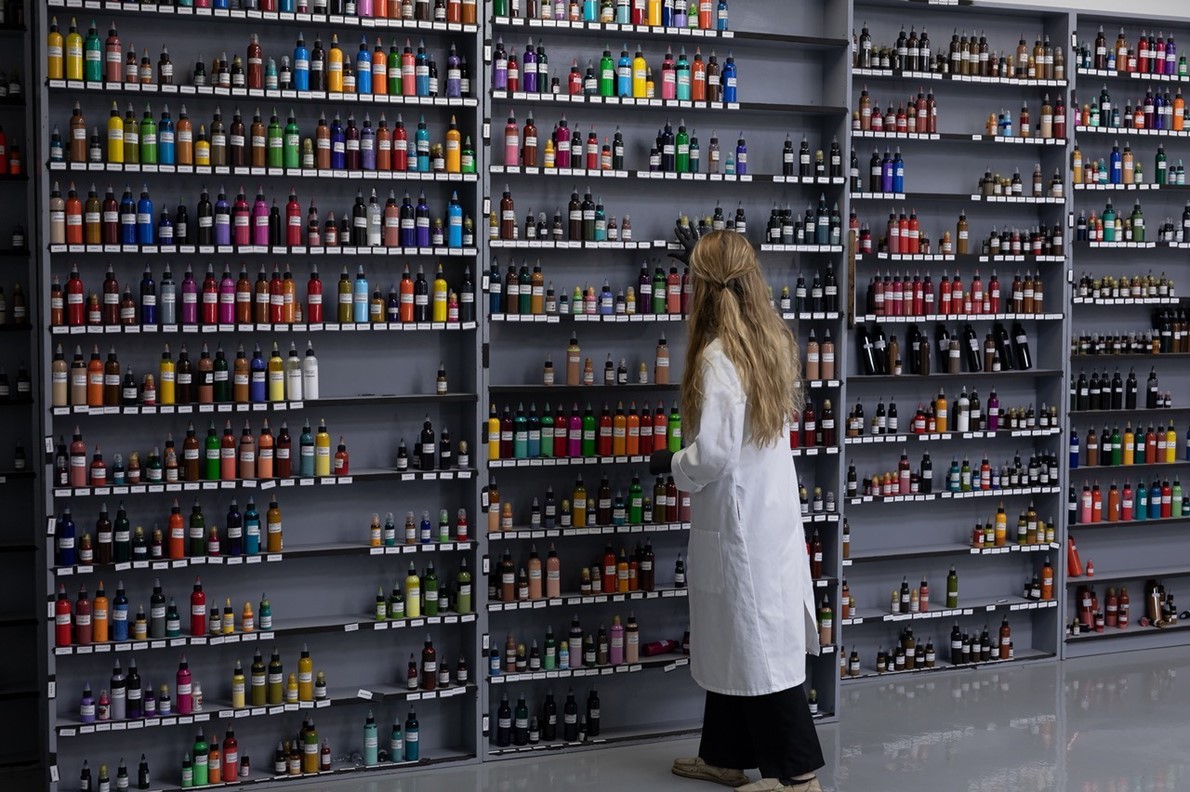A long a bare torso and down a thigh, the sun glints through ocean waters and
bathes coral and fish in aqueous light. On a lower leg, vivid frogs tense, as
if preparing to jump from dewy leaves. A mischievous child with twinkling blue
eyes stares out from an inner bicep.
اضافة اعلان
In his home studio in the northern
Italian village
of Grado, Alex De Pase reviewed photographs of some of the thousands of designs
he had inked over his career as a tattoo artist. But these skinscapes might not
be possible to replicate in 2023 — at least not with the same set of colors.
New regulations on tattoo inks and permanent makeup
that began taking effect across the
EU in January were meant to reduce the risk
of including ingredients that could be health hazards. The regulations have
also caused the biggest shakeup of the industry in memory, with ink manufacturers
reformulating entire product lines to comply.

The possibility of even more disruption hangs over
artists’ heads next year, when bans go into effect on green and blue pigments
that ink manufacturers say may be impossible to replace. This has provoked an
uproar among tattooists who have argued the restrictions are overbroad, sow
unnecessary concern among clients and undermine their art.
Europe’s regulations could portend changes in the
US, where the Food and Drug Administration has some oversight of inks and
pigments. In November, when Dr Linda Katz, director of the agency’s Office of
Cosmetics and Colors, gave a presentation at a conference on tattoo safety in
Berlin and was asked whether the country would align its regulations with
Europe’s, she responded: “That remains to be seen, and we’re working on that
area itself.”
De Pase, who is known for the photorealism of his
tattoos — particularly his portraits — which he inks in his home studio, says
he carefully mixes different shades to achieve the subtleties of skin tone.
“I’m well-known because of my color tattoos,” he said. “For me, this is an
issue.”
Tattoo trends and toxicology
Once the rebellious mark of
sailors and bikers, tattoos long ago shed any vestige of being a fringe art
form. Surveys indicate about one-quarter of
Europeans aged 18 to 35 and nearly
one-third of American adults sport tattoos. Given all that inked flesh,
documented complications are relatively uncommon and typically involve
bacterial infections or allergic reactions. But regulators have not kept up
with the popularity of body art. Only a few European countries exert national
oversight of tattoo inks. Until this year, there were no binding standards
across the EU.
Modern tattoo inks are complex concoctions. They
include insoluble pigments that provide shade or color, binding agents to keep
the pigments suspended in liquid as they are transferred to the skin and water,
and other solvents such as glycerin and alcohol that influence the ink’s
qualities, along with preservatives and other additives.

Upon injection, some pigment remains permanently in
the skin, but it can also migrate to the lymph nodes. When exposed to sunlight
or during laser removal, pigments may also cleave into new, potentially more
toxic compounds and circulate throughout the body.
Over the years, traditional ink manufacturers have
incorporated heavy metals such as barium and copper into their pigments to
create a widening palette of colors, and neurotoxic agents like cadmium, lead,
and arsenic have been documented in some inks in high concentrations. These
elements may also be found in so-called vegan inks, which merely exclude
animal-derived glycerins and other ingredients.
Since 2015, Europe has required manufacturers to
label inks indicating hazardous ingredients they contain. But because raw
pigments are manufactured at an industrial scale for use in all manner of
products, including clothing and automobiles, they are not always of a purity
one might hope for in a substance injected into one’s skin.
Ines Schreiver, co-director of the Federal Institute
for
Risk Assessment in Germany, which focused on the toxicology of tattoos,
said that basic questions about the body’s exposure to the inks remained
unanswered. Among the unknowns are how much ink enters the body, the
relationship between that exposure and adverse reactions that occasionally
follow, and any illness that may emerge years later.
“I would not use the word ‘safe’ or ‘unsafe’ to
describe tattooing,” she said. “I tell my friends to inform themselves about
possible side effects and about the uncertainties.”
After lengthy deliberations by the European
Chemicals Agency, the European Commission opted to focus on substances known to
be hazardous, banning a long list of chemicals already prohibited for use in cosmetics
and sharply limiting the concentrations of certain corrosive or irritating
compounds.
The ban included two pigments, Blue 15:3 and Green
7, based in part on decades-old research that linked their use in hair dyes
with an elevated risk of bladder cancer. Acknowledging ink manufacturers’
objections that there were no substitutes for those pigments but lacking
evidence to affirm their safety, the commission delayed its prohibition until
next year.

“The substances are injected into the human body for
permanent and prolonged contact — for life,” said Ana María Blass Rico, a
commission policy officer. “So that’s why it’s so protective.”
In the US, where many tattoo inks used in Europe are
produced, manufacturers rushed to reformulate their products to meet the new
standards. One of the leading suppliers, World Famous Tattoo Ink, has a new
facility in Greenville, South Carolina, where each month in a sterile clean
room, 400,000 bottles are filled and packaged.
Although World Famous had been exploring replacements
for the banned pigments, they had not yet found any suitable substitutes,
according to the owner, Lou Rubino.
Read more Fashion
Jordan News



